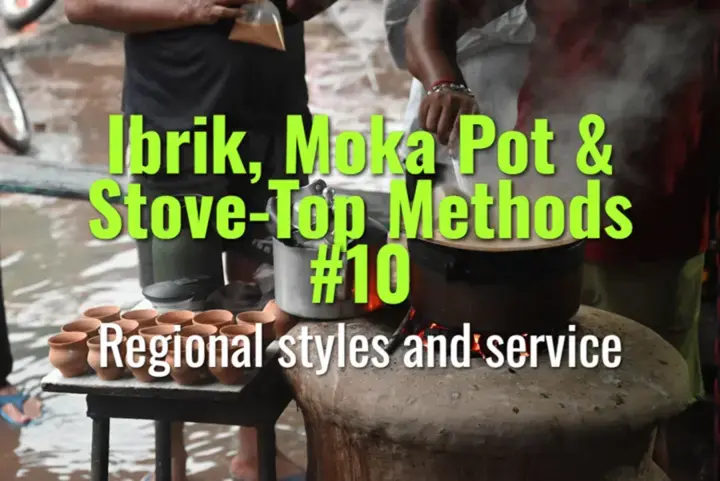Regional styles and service
The diverse regional traditions of serving ibrik and Moka pot coffee, and how cultural context shapes preparation and presentation.
- Coffee Basics Nerds
- 2 min read
Article 10 of 12 in Ibrik, Moka Pot & Stove-Top Methods/

Turkish & Greek Ibrik Traditions
- Known as Türk kahvesi in Turkey, ellinikós kafés in Greece.
- Coffee ground ultrafine, brewed with sugar stages (sade, orta, şekerli).
- Served in small demitasse cups with foam (köpük/kaimaki) prized.
- Often accompanied by lokum (Turkish delight) or small sweets.
Middle Eastern Variations
- Arabic Coffee (Qahwa): Often lighter roast, spiced with cardamom, cloves, or saffron.
- Served in small handleless cups (finjans), frequently during ceremonies and hospitality rituals.
- May be prepared in larger dallahs (Arabic coffee pots).
Balkan Styles
- Bosnia, Serbia, and neighboring regions preserve domestic ritual around ibrik.
- Coffee served with rakija (fruit brandy) or sweets.
- Slow-paced, social drinking culture.
Italian Moka Pot Tradition
- Moka pot (Bialetti-style) is an everyday home staple.
- Often brewed strong and enjoyed as caffè at home instead of espresso.
- Typically consumed black, but sometimes lengthened with hot milk.
Latin American Use
- Popular in Cuba, Argentina, and Brazil for household brewing.
- In Cuba, Moka pot is often used to make cafecito (espresso-like sweetened coffee).
Service Customs
- Ibrik: Served unfiltered; grounds settle at bottom—guests sip slowly and stop before the dregs.
- Moka Pot: Poured into small cups, often family-style at the table.
- Regional service often includes ritual accompaniments: sweets, water, or spirits.
Summary
Both ibrik and Moka pot coffees carry deep regional identities. From the ritual-rich ibrik traditions of the Middle East and Balkans to the practical household culture of Italian Moka pots, service style reflects hospitality, heritage, and everyday life.